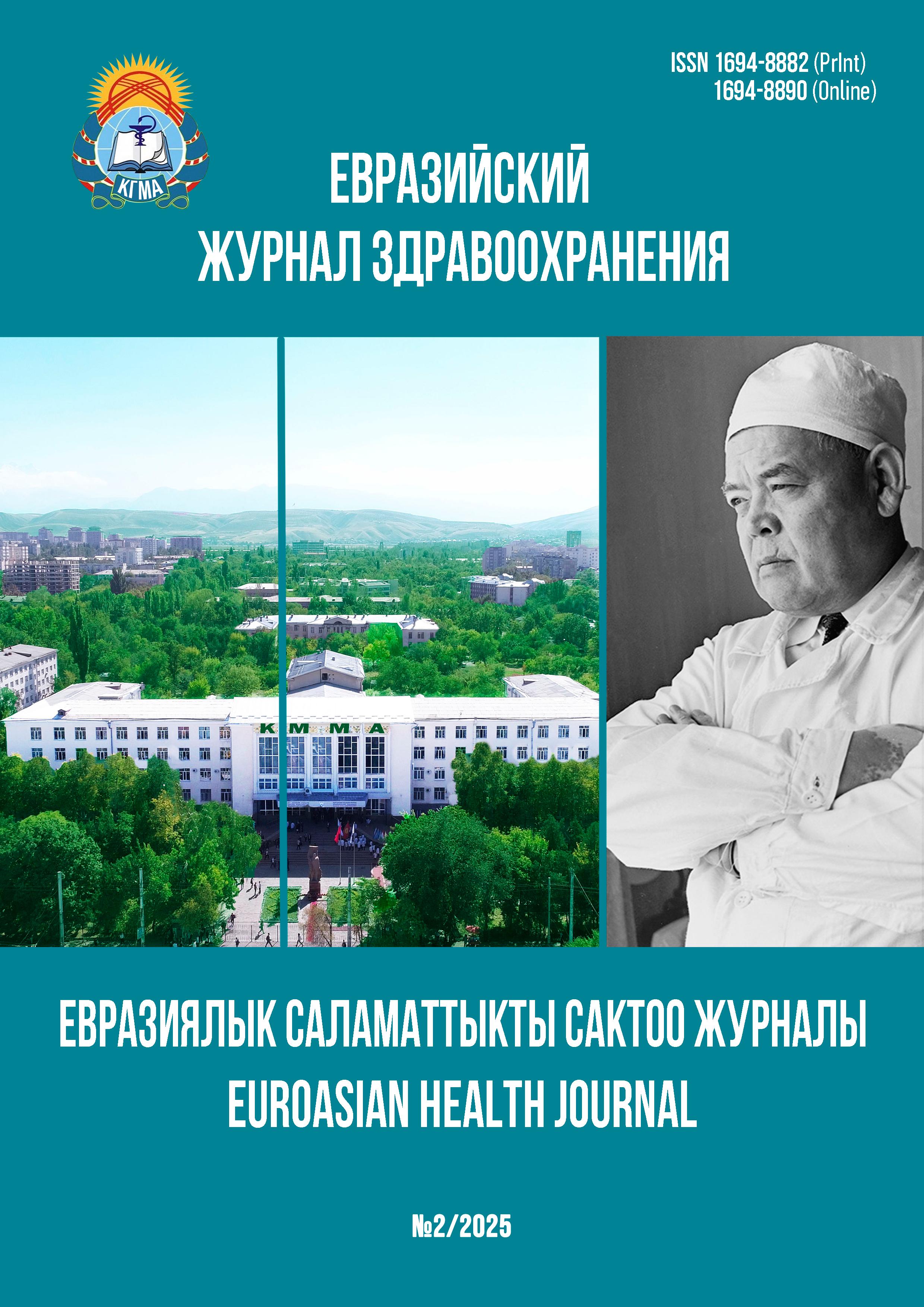EFFECTIVENESS RESULTS OF ENDOSCOPIC ASSISTANCE IN SANITARY SURGERIES OF THE MIDDLE EAR
DOI:
https://doi.org/10.54890/1694-8882-2025-2-170Abstract
This study was conducted with the aim of comparing the effectiveness of closed sanitizing surgeries with and without the use of endoscopic assistance in chronic suppurative otitis media (CSOM). The study included 39 patients who underwent closed surgeries, including atticotomy, tympanoplasty, and other methods. The patients were divided into two groups: in the first group, surgery was performed using both a microscope and an endoscope, while in the second group, only a microscope was used. The results showed that the use of an endoscope significantly improved the visualization of hard-to-reach areas of the middle ear, such as the anterior attic, facial sinus, and others. This reduced the risk of residual cholesteatoma development, particularly in children.
Postoperative audiological results showed no significant differences; however, in the group with endoscopic assistance, the recurrence rate of cholesteatoma was lower (10% versus 30%). The study's conclusions confirm that combining a microscope and an endoscope increases the effectiveness of sanitizing surgeries, reduces the risk of recurrence, and improves the restoration of middle ear anatomy. Endoscopy, especially in pediatric practice, offers a valuable alternative to traditional microscopic techniques, ensuring more complete and stable recovery.
Keywords:
chronic suppurative otitis media, sanitizing surgeries, endoscopic assistanceReferences
1. Shibuya T, Nakao M. Chronic suppurative otitis media and cholesteatoma in children: A review of surgical outcomes and complications. Int J Pediatr Otorhinolaryngol. 2020;139:110390.
2. Амонов Ш. Э., Идрисова Л. Г., Петрова Н. В., и др. Особенности обследования детей с хроническим гнойным средним отитом и их хирургическое лечение. Colloquium-journal. 2020;13(2):35-36.
3. Younis A, Badran K. The role of microscopy in otologic surgery. Eur Arch Otorhinolaryngol. 2019;276(3):825-834.
4. Насыров В.А., Бейшенбаева Б.Э. Прогнозирование уровня заболеваемости болезней уха и сосцевидного отростка в Киргизской Республике. Бюллетень науки и практики. 2021;7(1):118-123. https://doi.org/10.33619/2414-2948/62/13
5. Krespi YP, Desai RR. Endoscopic surgery in otology: An overview. Otol Neurotol. 2018;39(9):e861-e867.
6. Хамракулова Н. О., Бекжанова К. С., Тургунова Р. Г. Выбор тактики лечения больных хроническим гнойным средним отитом исходя из особенностей его течения. Научные механизмы решения проблем инновационного развития. 2016:233-239.
7. Stankovic K, Zeng Z. Endoscopic ear surgery: Applications and outcomes. Otolaryngol Clin North Am. 2017;50(6):1053-1065.
8. Nurmukhamedova F., Khamrakulova N. Indicators of quality of life in patients with chronic suppurative otitis media after tympanoplasty. J Biomed Pract. 2021;6(4):96-100.
9. Mowad M, Lichtenstein D. Endoscopic-assisted tympanoplasty: A promising technique for cholesteatoma management. J Otolaryngol. 2021;33(4):222-230.
10. Нурмухамедова Ф. Б., Амонов А. Ш. Сравнительная характеристика оценки качества жизни пациентов с хроническим гнойным средним отитом до и после хирургического лечения Оториноларингология. Восточная европа. 2022;12(3):287-294. https://doi.org/10.34883/PI.2022.12.3.014







